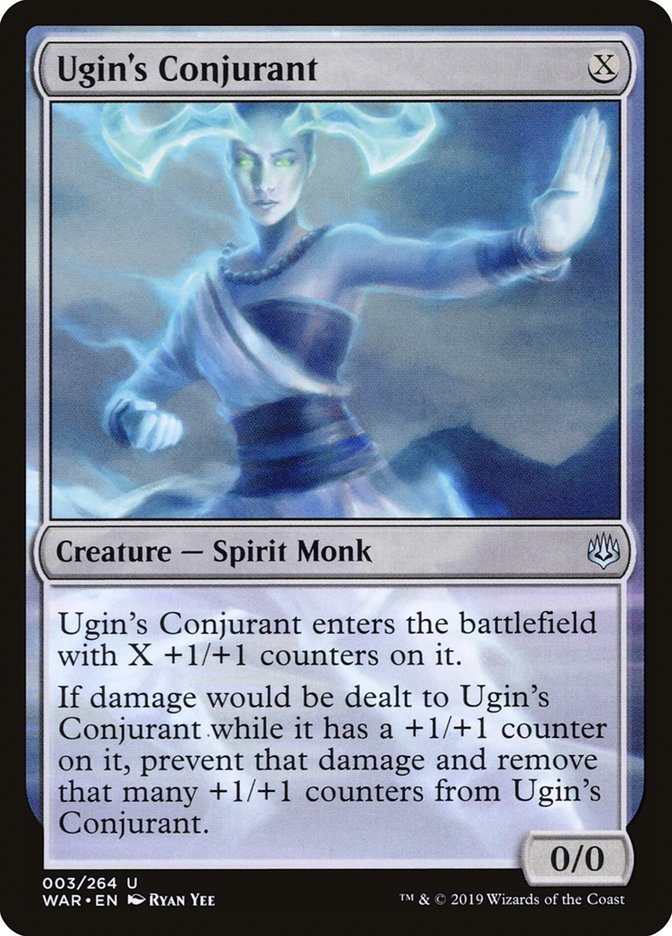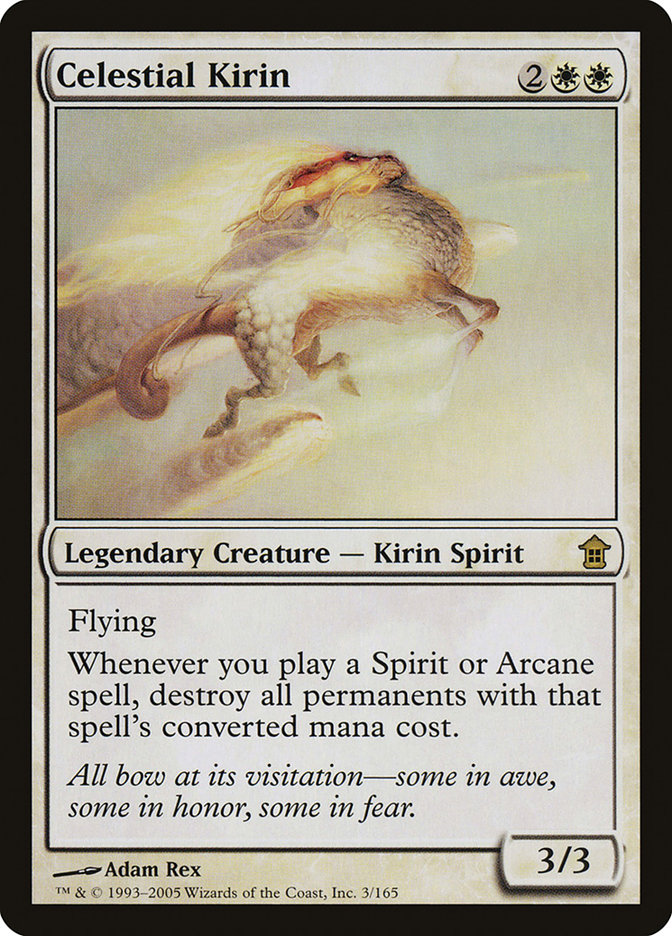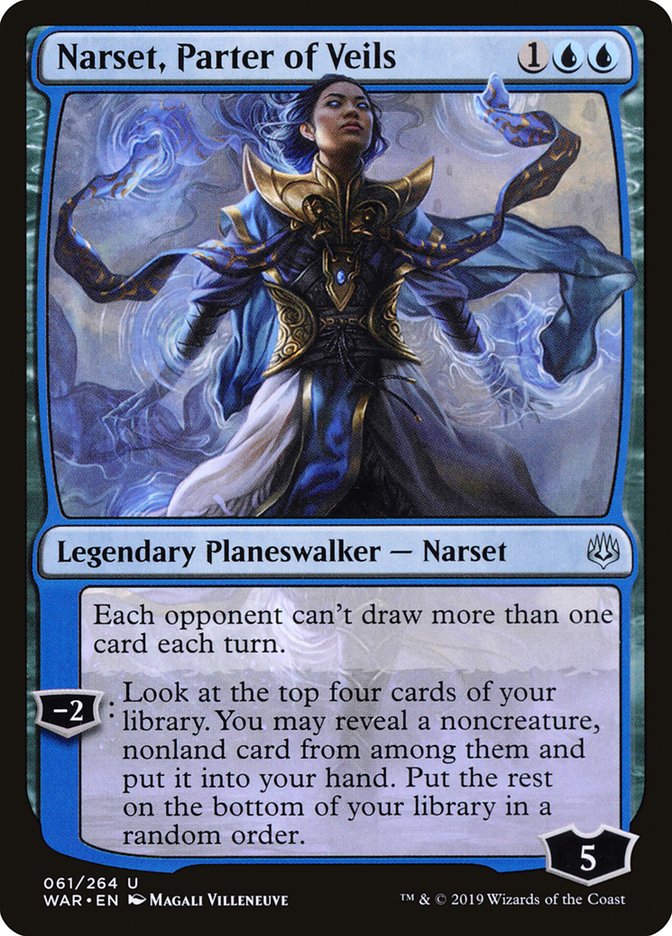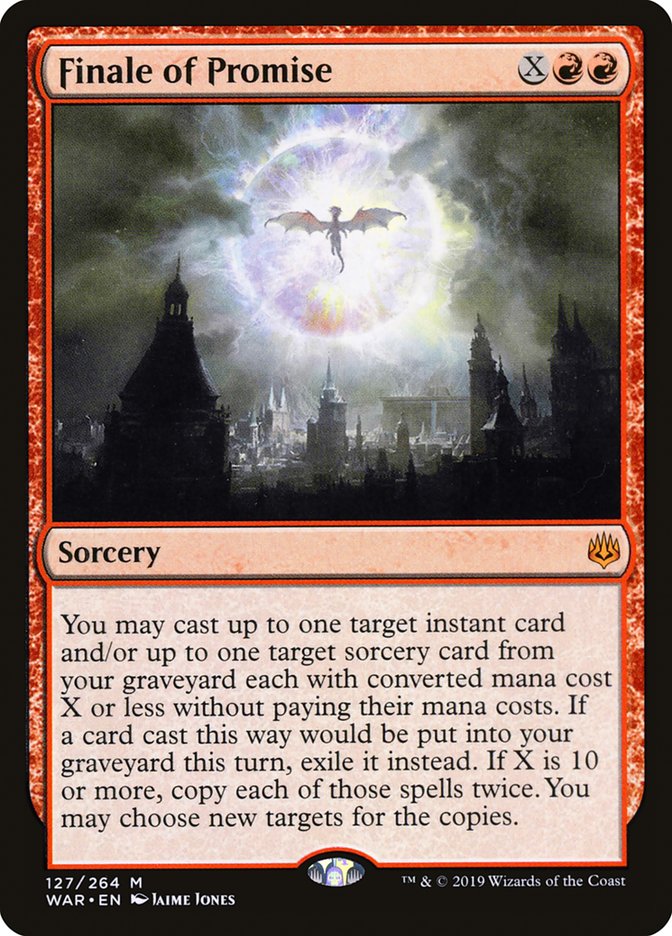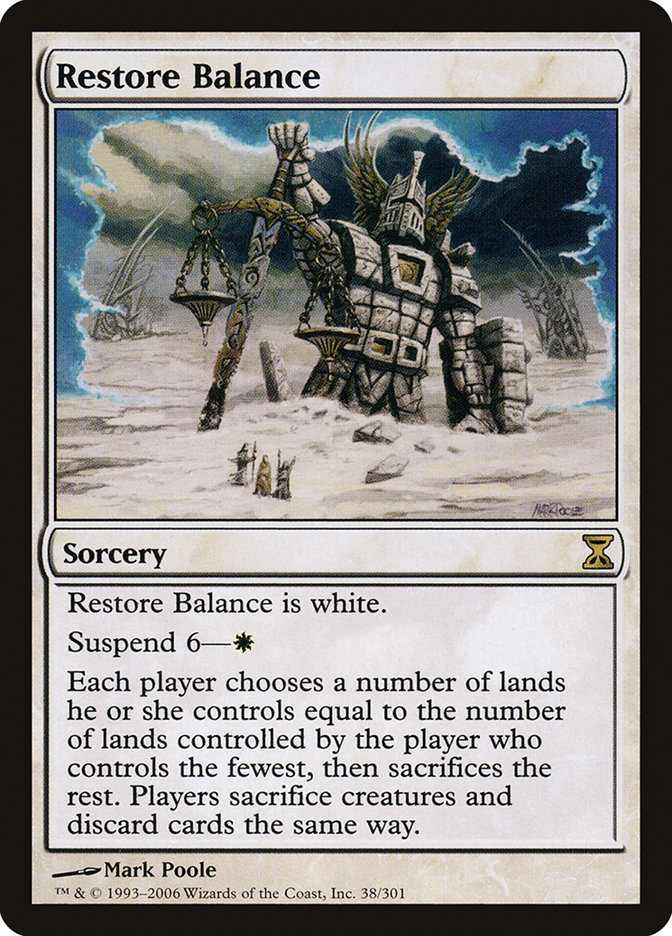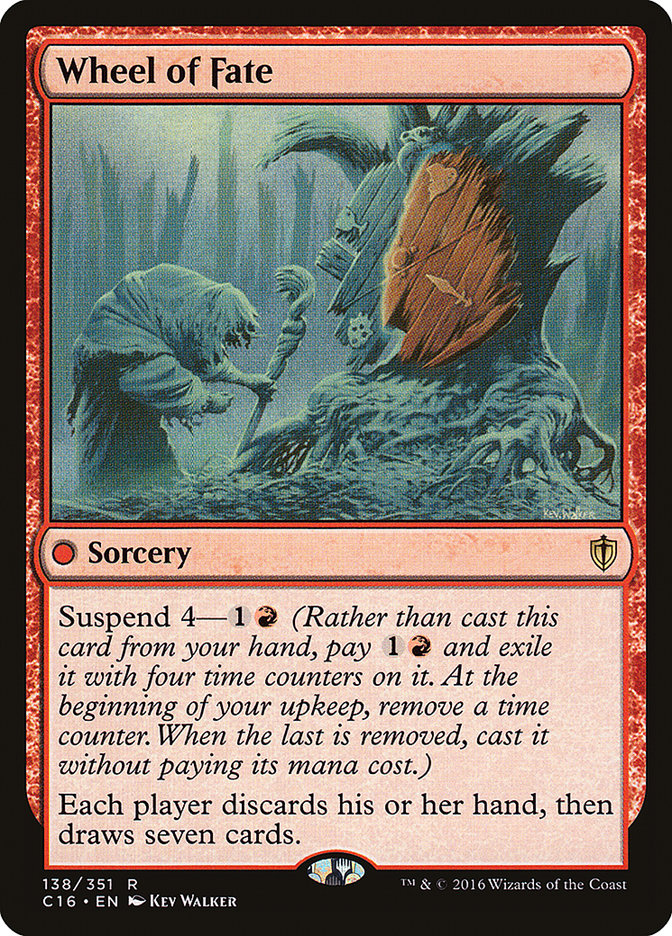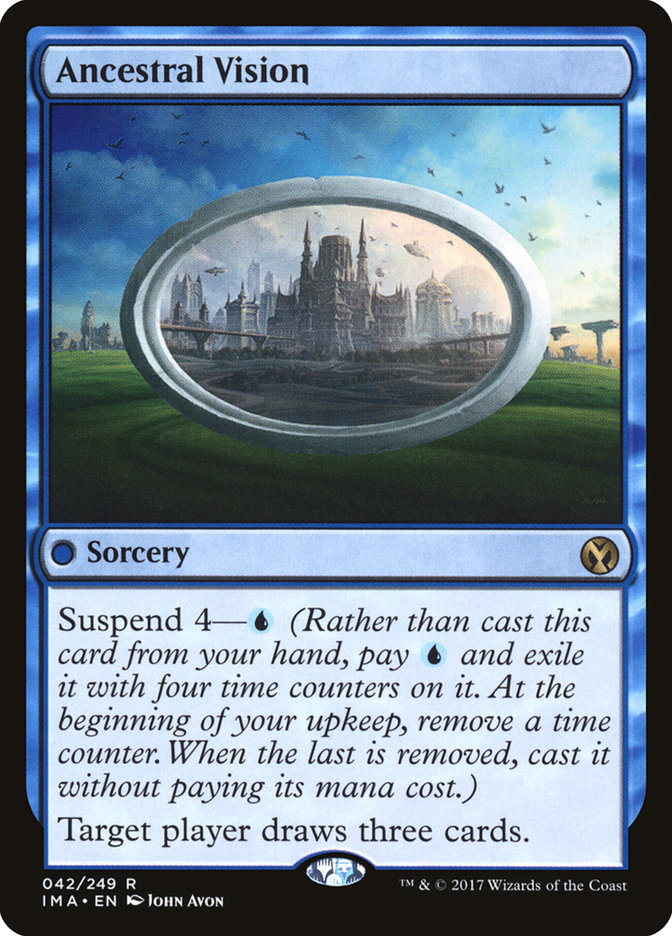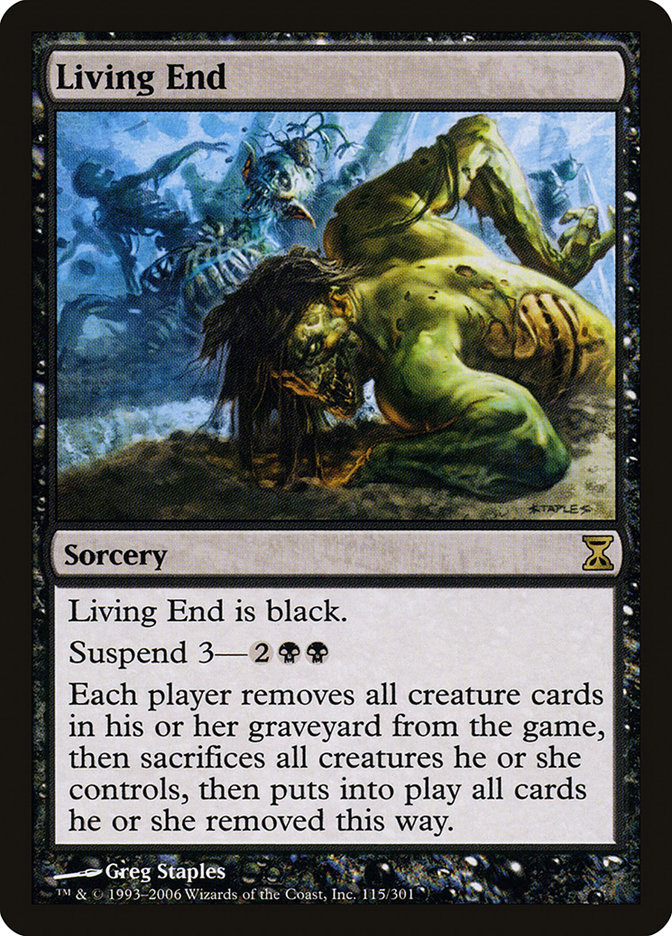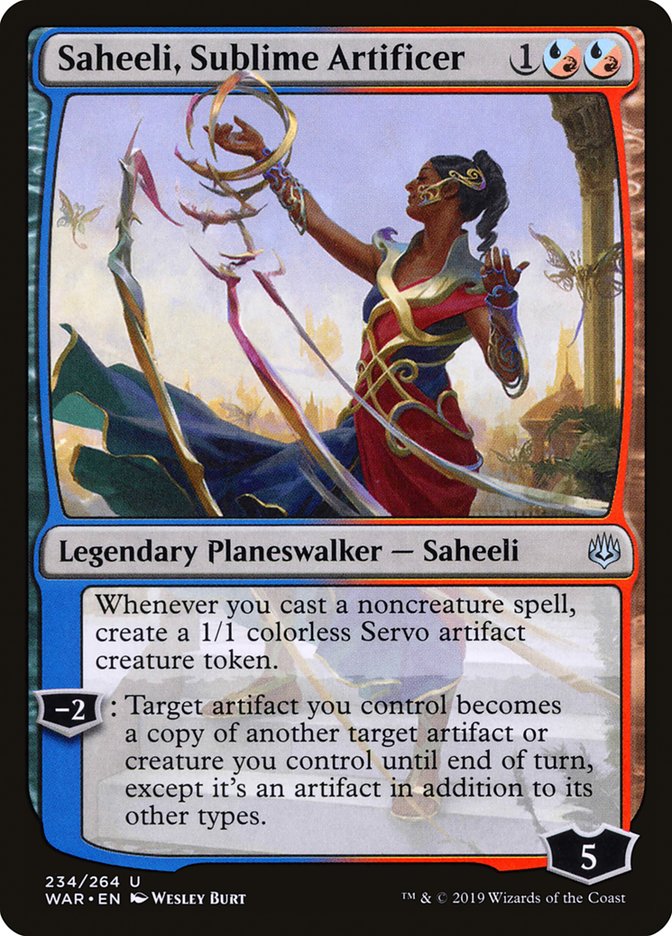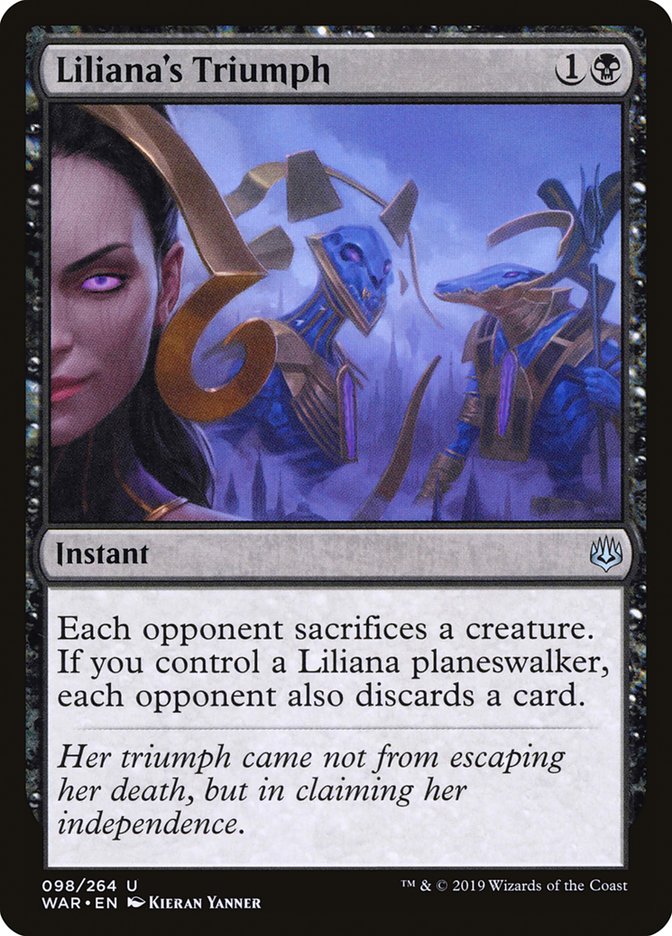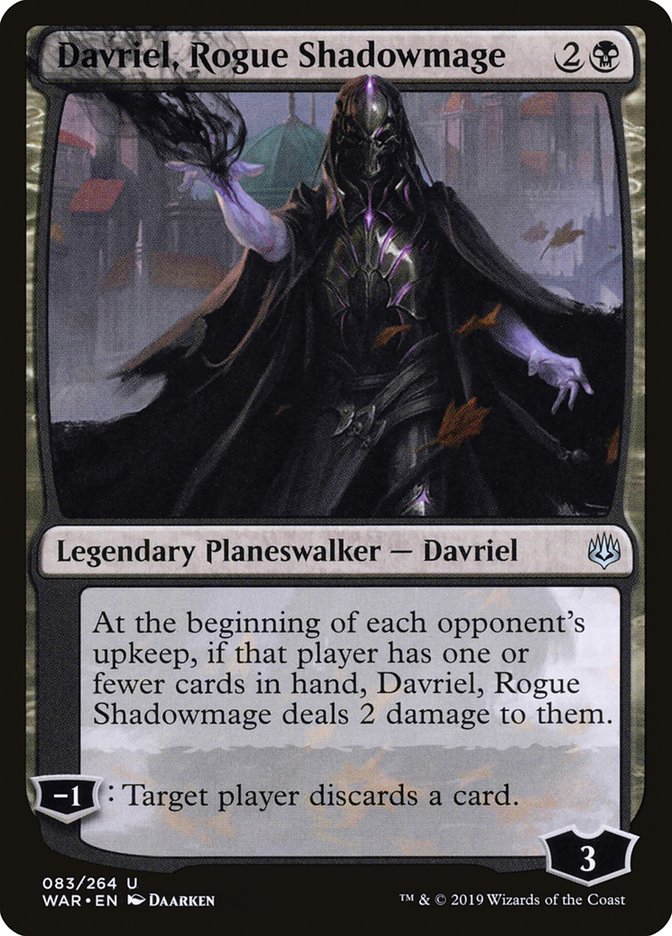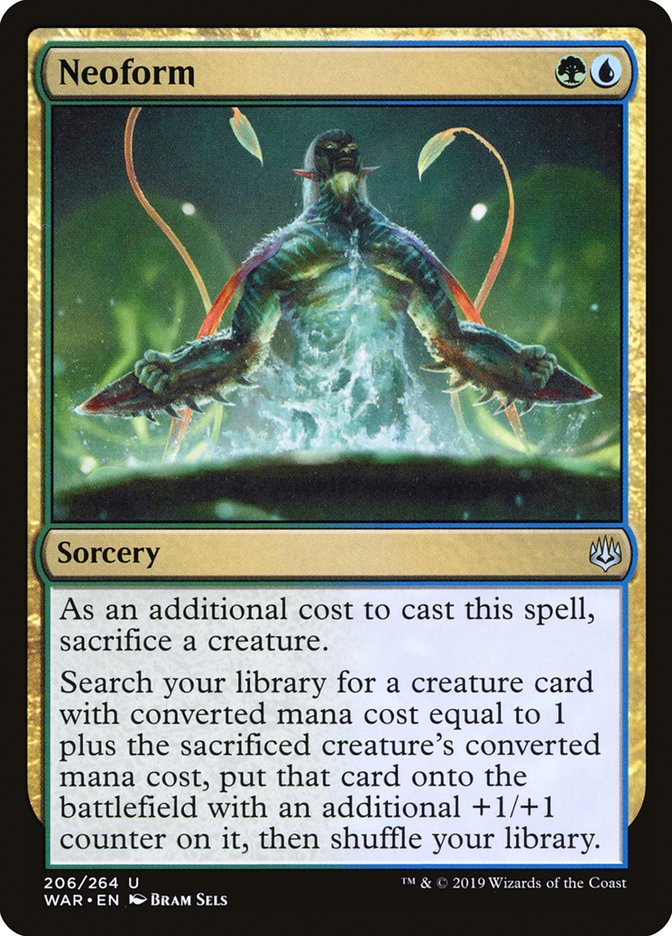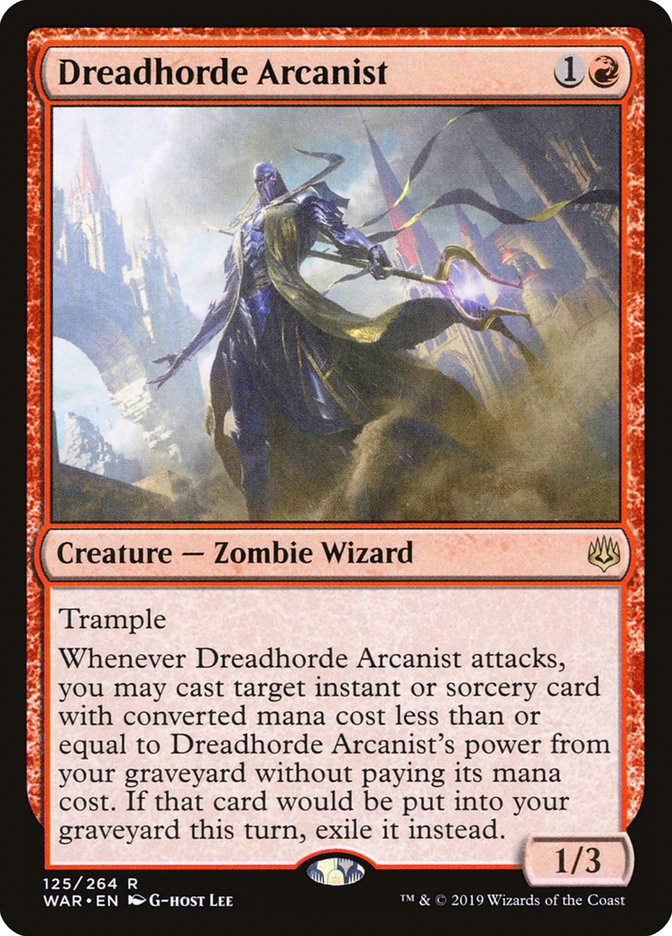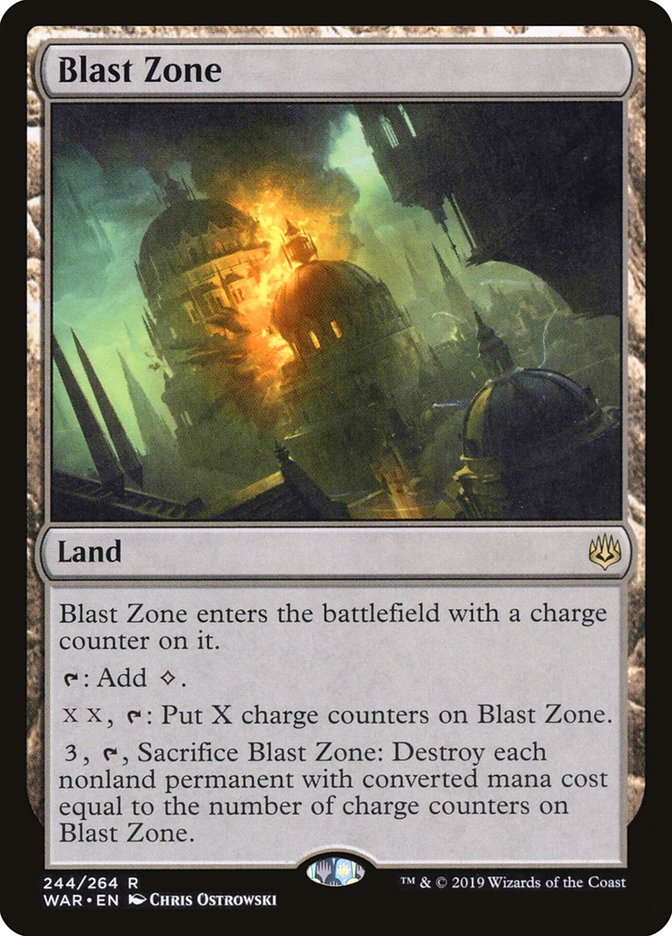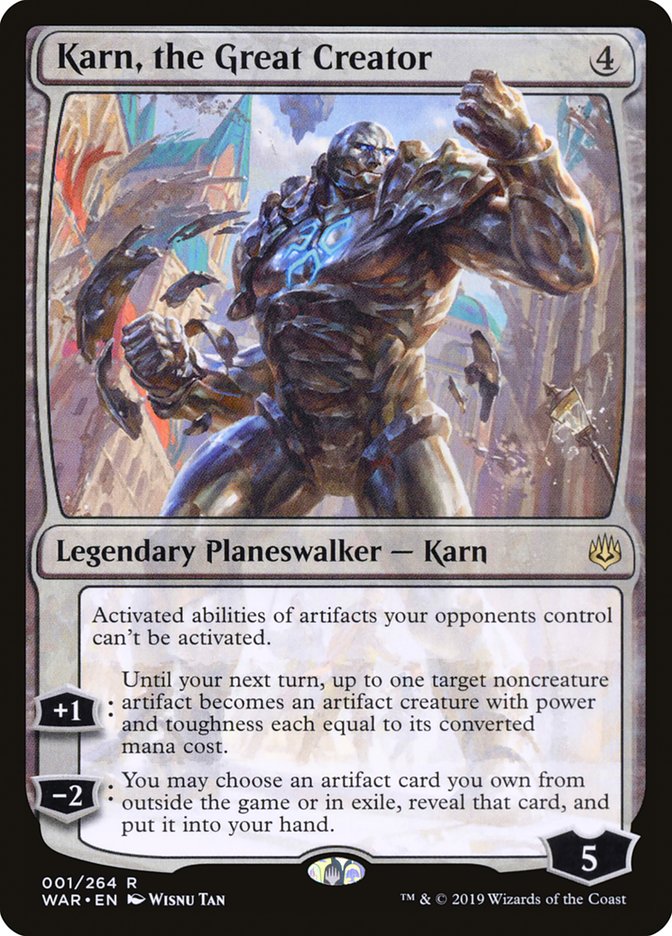Mythic Championship London is in the books, and it revealed a Modern format that was able to maintain archetype diversity even in the face of rule changes that many feared would push the format even further towards linearity. This bodes well for the future of Modern, and indeed, Wizards of the Coast seems to have similar feelings. The next Pro Tour will again be Modern, and while Modern Horizons will certainly shake things up again at Mythic Championship Barcelona, we haven’t even gotten to unpack War of the Spark‘s impact yet.
Surprisingly, that impact looks to be huge. While there are the usual longshots at the top-end of this list, there are some bona fide slam dunks here. Without further ado:
10. Ugin’s Conjurant
Anytime a spell is free, you have to pause and ask yourself what kind of shenanigans you can get up to with it. In the case of Ugin’s Conjurant, you’re looking at a free “dies” trigger, a free cast trigger, and maybe an extremely unlikely place for a tribal Spirits build to dump a whole bunch of mana. The wildest home for Ugin’s Conjurant is unquestionably alongside a forgotten Saviors of Kamigawa rare.
Did you notice a key phrase that is absent from Celestial Kirin’s text? That’s right, it doesn’t say “nonland.” Ugin’s Conjurant on zero is Armageddon. It’s a faster Engineered Explosives on other numbers. And the Oracle text on Celestial Kirin makes its ability a cast trigger, meaning it’s virtually uncounterable. I know Gerry Thompson is super-excited to see what he can do with this interaction, so I wouldn’t be surprised to hear more from him about this combo in the future. I do think we’re looking at a longshot, but crazier archetypes have found flash-in-the-pan success in Modern. This could be the next one to steal a big tournament.
9. Narset, Parter of Veils
I was extremely dismissive of this card when I was doing my first past through on War of the Spark. However, context is everything when it comes to evaluating Magic cards, and while I remain skeptical of the card in Standard, the dramatic effect Narset, Parter of Veils has on the game plan of any cantrip-based archetype can’t be denied. At Mythic Championship London, we saw Izzet Phoenix fall back to the pack somewhat in overall winrate and metagame share, but a specific group retooled the deck around Pyromancer Ascension and put up some stellar results.
Creatures (8)
Lands (17)
Spells (35)
- 4 Lightning Bolt
- 4 Sleight of Hand
- 4 Serum Visions
- 4 Opt
- 4 Manamorphose
- 4 Pyromancer Ascension
- 3 Noxious Revival
- 4 Faithless Looting
- 4 Thought Scour
Sideboard

Even if Izzet Phoenix is ready to give up the mantle of “best deck,” its ability to continuously adapt shows that it will remain part of the format for a while. Those adaptations can potentially include a decreased reliance on the graveyard. If that’s the case, control decks may have interest in a card that goes directly after Izzet Phoenix’s primary way of generating advantage: its card-drawing spells. This weapon comes to control at a good time, as the archetype feels stronger than it’s been in ages, especially under the open decklist policies of the Mythic Championship.
Creatures (5)
Planeswalkers (5)
Lands (16)
Spells (34)

What is really holding Narset back in Modern is how few archetypes are presently built around card advantage and selection. Of course, Narset has no such problem in Legacy, where half the format is built around Brainstorm. Get your foils now!
8. Finale of Promise
Somewhere along the line, designers at WotC got over all fear of alternate ways to cast the Time Spiral suspend spells (more on this later).
It seems like their assumption that these spells are too much effort for the payoff has been mostly correct, but at some point, there will be enough redundant ways to cast one of these spells that things will just break in half. And I want to be in on that action when it finally happens. Therefore, all these cards will continue to make my Top 10 lists and I’ll probably continue to be disappointed every set.
People are also talking about this card in Izzet Phoenix, but I don’t buy it. Even if one Finale of Promise cast for three would bring all your Arclight Phoenixes back, it doesn’t make up for the times when the card does nothing because of graveyard hate, or rots in your hand while you’re mana-light. Most of the time, your regular cantrips find you more cantrips anyway. If you’ve played Izzet Phoenix, you know finding ways to get your firebirds back from the graveyard is generally not a concern.
7. Saheeli, Sublime Artificer
I think I’m less excited about Saheeli, Sublime Artificer than some of my peers, but I do recognize the value a Young Pyromancer proxy that isn’t targetable by creature removal can potentially provide. I previously spoke about Izzet Phoenix’s ability to adapt over time, and it wouldn’t surprise me at all if Saheeli ends up being one of those adaptations at some point. However, three mana with zero immediate impact is a huge investment in Modern, and if going wide with Humans and Affinity remains en vogue, keeping Saheeli alive will be challenging. If single-threat decks like Death’s Shadow or control decks reclaim the throne, then Saheeli is the way to go.
6. Liliana’s Triumph
As formats reach back, removal that does not target becomes increasingly more important. While Liliana’s Triumph will likely be a fringe player in Standard, it will shine like crazy in Legacy, where its less powerful analog, Diabolic Edict, was already seeing widespread play in order to deal with True-Name Nemesis; Emrakul, the Aeons Torn; and a host of other problematic threats. Somewhere in between these two poles lies Modern.
Again, Modern is cyclical. While it feels like going wide was the hotness at MC London, this could change as soon as the next SCG Modern Open. If Death’s Shadow, Gurmag Angler, Slippery Bogle, and other standalone threats make a triumphant return at some point, Liliana’s Triumph gets to be a player in the format at large, and every black-based deck will be looking to pick up a few copies of this powerful effect. Until that time, I expect mostly fringe play. There is one deck, however, that’s going to be jamming this card regardless of what the format looks like, and that deck also sees a large upgrade in the form of my #5 card…
5. Davriel, Rogue Shadowmage
8-Rack no longer! Has there ever been a card more tailor made for an archetype than Davriel? 8-Rack expert Tom Ross has already said his piece on the card (as well as Liliana’s Triumph) and I see no reason to argue with his judgment. This is an upgrade for a deck that was already so close to breaking into the top tiers of Modern, and Davriel may have just done the trick.
4. Neoform
Here’s where things start to get wild. Devoted Druid / Vizier of Remedies combo decks were already degenerate, even by Modern standards. With more consistent Turn 3 kills provided by Neoform as well as a toolbox that can get online even earlier, I expect things to get better for an archetype that’s been oppressed under the reign of Izzet Phoenix. They even get access to Finale of Devastation if they want it – another powerful tutor effect that just missed my Top 10 list. That’s all well and good, and probably would have been enough to get Neoform on my list by itself. But it gets this extremely high position because we can now start talking Turn 1 kills.
Creatures (19)
- 2 Autochthon Wurm
- 1 Wild Cantor
- 4 Allosaurus Rider
- 4 Simian Spirit Guide
- 4 Chancellor of the Tangle
- 2 Griselbrand
- 2 Borborygmos Enraged
Lands (14)
Spells (27)
- 4 Nourishing Shoal
- 2 Forest
- 1 Island
- 1 Seismic Assault
- 4 Serum Visions
- 4 Summoner's Pact
- 3 Manamorphose
- 4 Eldritch Evolution
- 4 Neoform
Sideboard

This version of the archetype comes from Twitter user @Garoudo2000 but the deck is presently everywhere on Magic Online as players rush to figure out optimal configurations. The Turn 1 kill is as simple as Neoforming or Eldritch Evolutioning an Allosaurus Rider and going to town with the combination of Griselbrand and Nourishing Shoal. At some point you’ll Neoform up Borborygmos Enraged or draw Seismic Assault and throw lands at your opponent until they’re dead. You can also use Lightning Storm for the same trick. This deck crumbles to a stiff breeze, but it seems like Modern finally has its Belcher-esque pure combo deck, and if the right configuration is found, Turn 1 kills might become a scarily regular occurrence.
3. Dreadhorde Arcanist
Let’s have us a look at the most played cards at Mythic Championship London, courtesy of WotC.
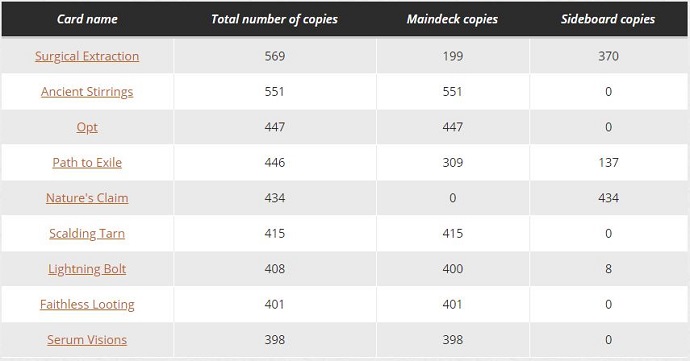
Notice any common trends? Every single one of those cards has a converted mana cost of just one mana. How convenient for our friend Dreadhorde Arcanist. I know that it’s easy to dismiss a very fragile 1/3 body in a format with excellent one-mana removal, but Dreadhorde Arcanist only needs to attack one time to start snowballing things very far in its favor. “Turn 1 removal spell, Turn 2 Dreadhorde Arcanist, Turn 3 attack and flash back removal spell” can be devastating against creature-based strategies. I would expect “Turn 1 Thoughtseize, Turn 2 Dreadhorde Arcanist, Turn 3 second Thoughtseize” to be equally as backbreaking against combo decks. Once the dirty work is done, Arcanist is ready to get to work as your card advantage engine, casting those Opts and Serum Visions. How about some graveyard hate? Arcanist is happy to serve that up in the form of Surgical Extraction.
On top of fair applications, Dreadhorde Arcanist is ready to cast those same Time Spiral spells that everyone fears will eventually tear Modern in half. People have drawn the obvious parallels between Snapcaster Mage and Dreadhorde Arcanist, but to me, this card is much more akin to Stoneforge Mystic. If you get to untap with it on the battlefield, it will just run away with the game singlehandedly.
2. Blast Zone
It’s lit! You knew I wasn’t going to neglect the Amulet Cabal’s Invitational card. Amulet Titan had a rough go of it at Mythic Championship London, in no small part due to a difficult Humans matchup. Picking up another Engineered Explosives stand-in will help there, and Blast Zone contributes to Amulet Titan’s ability to find answers to absolutely every problem given enough time and mana.
But while this represents a somewhat redundant effect in Amulet Titan due to already reliable access to Engineered Explosives, things get really interesting in Blast Zone’s other homes. Every deck now has answers to every type of permanent. Decks like Colorless Eldrazi or Eldrazi Tron previously just had to consent to some weaknesses. Now, those weaknesses have been blunted. In many respects, these decks were already freerolling with their manabases. Now they are just tacking on an incredibly powerful spell for free. Expect to see more decks like this in the near future:
Creatures (25)
- 4 Simian Spirit Guide
- 1 Endbringer
- 4 Eldrazi Mimic
- 4 Reality Smasher
- 4 Thought-Knot Seer
- 4 Matter Reshaper
- 4 Eternal Scourge
Lands (23)
Spells (12)

1. Karn, the Great Creator
Speaking of options for colorless decks, how about a one-sided Stony Silence? While Stony Silence is down from its heyday during the Ironworks era, it’s still a card with a huge Modern pedigree. The aforementioned colorless decks (and really, any deck that needs the effect) now having access is a truly big deal. But that’s not going to get Karn to the top slot on its own. What has me excited is a very real-looking retool of one of Modern’s longest-reigning top archetypes.
Creatures (7)
Planeswalkers (9)
Lands (15)
Spells (29)

Karn, the Great Creator can do some truly silly things in Emma’s deck, and games that could previously slip away after a created Tron are going to be locked up in ironclad fashion. Karn can gain life. Karn can stop your opponents from attacking. Karn can lock out one-mana spells. Karn can hate graveyards. Karn can make creatures. And finally, in conjunction with Mycosynth Lattice, Karn can deny your opponent all activated abilities for the rest of the game, including mana production. The fact that several of these plays will still be available in games you struggle to assemble Tron is a big get for Karn disciples.
There’s little debate that Tron benefits more than almost any other deck from the London Mulligan rule. If the rule is instated full-time and Karn, the Great Creator proves to be a significant upgrade to the archetype, expect the anti-Tron memeing to reach a fever pitch.
I can’t wait.


